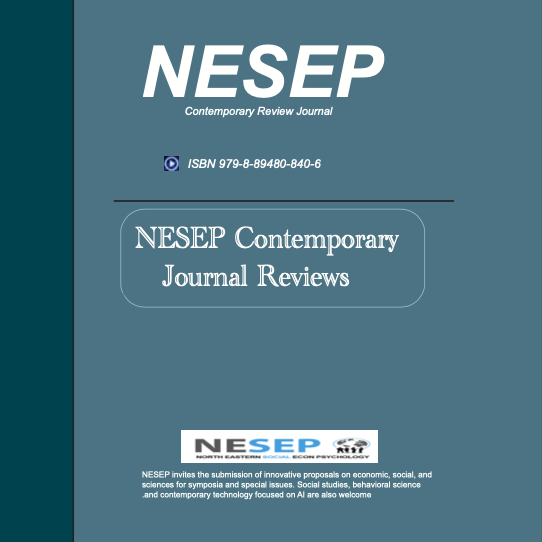Accepted Articles
We congratulate you on acceptance of your manuscript.

Annual Expo by the Journal of Young Explorers Meta and NESEP
- Fundamental or applied research
- Interdisciplinary research
- Judging on a rolling basis
- A work-in-progress research
- Completed research
- Unlimited topics and ideas
- ISBN 979-8-89480-840-6
- NESEP/NY-CSEF event at Harvard Club in NYC
Seeing Through the Scan: The Impact of fMRI Evidence on Juror Satisfaction and Verdicts
Abstract: The areas of the brain that become active when formulating a lie, or “deceit patterns, are denoted on fMRI scans, yielding results that are more accurate than the polygraph. Using publicly available court records and fMRI results obtained from previous literature, the extent to which fMRI scan evidence influences juror confidence, perceived strength of argument, and verdict counts between participants serving as mock jurors in a mock trial exposed to fMRI scan evidence and those not exposed to it were compared. Analysis of these metrics revealed that a mock juror’s exposure to fMRI evidence increases their perceived strength of the argument for the side consistent with their verdict and drastically changes the distribution of guilty versus not guilty verdicts. The difference in confidence levels between mock jurors in the control and experimental groups was not found to be statistically significant, however future research using a larger sample size may verify the current trend that viewing fMRI evidence increases juror confidence in their verdict. Although fMRI evidence possesses the potential to revolutionize the way juries lend weight to pieces of evidence, because it was found to cause such significant shifts in juror decision making, court judges should caution its admission into evidence or further scrutinize its credibility during evidentiary suppression hearings until it is deemed generally acceptable by the scientific community.
References
- Amirian, J. (2013). Weighing the admissibility of f MRI technology under FRE 403: For the law, f MRI changes everything and nothing. Fordham Urban Law Journal, 41(2), 715-770.
- Brown, T., & Murphy, E. (2010). Through a Scanner Darkly: Functional Neuroimaging as Evidence of a Criminal Defendant's Past Mental States. Stanford Law Review, 62(4), 1119-1208. Retrieved from http://www.jstor.org/stable/40649625
- Disbrow, Elizabeth A., et al. "Functional MRI at 1.5 Tesla: A Comparison of the Blood Oxygenation Level-Dependent Signal and Electrophysiology." Proceedings of the National Academy of Sciences of the United States of America, vol. 97, no. 17, 2000, pp. 9718–9723. JSTOR, www.jstor.org/stable/123530. Accessed 5 Feb. 2020.
- Funk, C. (2018, March 13). Daubert versus frye: A national look at expert evidentiary standards. The Expert Institute. Retrieved November 6, 2019, from https://www.theexpertinstitute.com/daubert-versus-frye-a-national-look-at-expert-evidentiary-standards/
- Justia. (2002). United States v. Mezvinsky, 206 F. supp. 2d 661 (E.D. pa. 2002). Law.justia. Retrieved October 11, 2019, from https://law.justia.com/cases/federal/district-courts/FSupp2/206/661/2433256/
- Kassin, S., & Dunn, M. (1997). Computer-Animated Displays and the Jury: Facilitative and Prejudicial Effects. Law and Human Behavior, 21(3), 269-281. Retrieved from http://www.jstor.org/stable/1394012
- Mohamed, F. B., Faro, S. H., Gordon, N. J., Platek, S. M., Ahmad, H., & Williams, M. J. (2006). Brain mapping of deception and truth telling about an ecologically valid situation: functional MR imaging and polygraph investigation—initial experience. Radiology: Volume 238, 679-688. Retrieved December 9, 2019 from https://pdfs.semanticscholar.org/17e5/700fe998c1c7567342474f8578ac50698512.pdf
- Moll, Jorge, Oliveira-Souza, Ricardo de, Moll, Fernanda Tovar, Bramati, Ivanei Edson, & Andreiuolo, Pedro Angelo. (2002). The cerebral correlates of set-shifting: an fMRI study of the trail making test. Arquivos de Neuro-Psiquiatria, 60(4), 900-905. https://doi.org/10.1590/S0004-282X2002000600002
- Pardo, Michael S., Neuroscience Evidence, Legal Culture, and Criminal Procedure. American Journal of Criminal Law, Vol. 33, p. 301, 2006; U of Alabama Public Law Research Paper No. 910958. Available at SSRN: https://ssrn.com/abstract=910958
- Raichle, M. E. (2009). Using imaging to identify deceit: Scientific and ethical questions. In American Academy of Arts & Sciences (pp. 3-6).
- Reardon, S. (2015, March 2). Pain cases may usher brain scans into the courtroom. Scientificamerican. Retrieved October 11, 2019, from